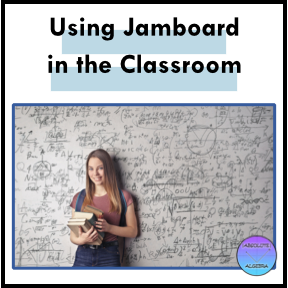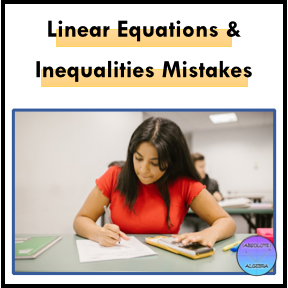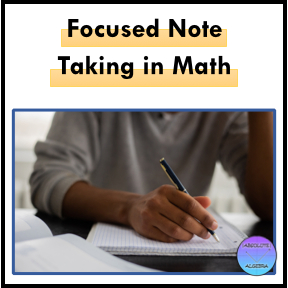When it comes to supporting English Language Learners, there is a lot of general advice on best teaching practices. But as a math teacher, you are probably stuck wanting to know more about English Language Learners in the math classroom. Here is some of my best advice for helping ELLs succeed in math!

Important Vocabulary
- English Language Learner (ELL): This term refers to the person who is learning English
- English as a Second Language (ESL): This term refers to the class someone would take when learning English
- Emergent Bilingual (EB): This is a fairly new term and refers to people who are learning English while also still using and developing their home language
Ways to Connect with the English Language Learners in the Math Classroom
Currently, I teach sheltered math classes in high school. This means that sometimes I have my own class with ELL students and other times I go into other teacher’s classes to offer support. First and foremost the BIGGEST takeaway I can give you from my experience is that it is crucial to get to know the student as a person. This rings true for effectively helping any of your students, but is especially important when teaching English Language Learners.
- Be welcoming!
- Even with a language barrier, you can still give the student a warm welcome with a smile and the atmosphere you establish in your classroom.
- Learn about their culture
- Ask them to teach you something. This helps build your rapport with the student. It can also help make them feel like an important part of the classroom community.
- Try to learn and speak their language
- It does not need to be perfect. Show the student you are invested in communicating with them. Welcome error correction from them! This is a great way to model risk-taking behavior when it comes to speaking a new language.
Want to learn more ways to create strong relationships with you students? Check out my blog post: Make Strong, Lasting Relationships with Your Students!
Ways to Support Participation from English Language Learners

Before diving into math curriculum, there are strategies and supports you can put into place in order to help the ELLs in your math classroom.
- Start by assessing how much English they speak.
- Ask them few questions and see how they answer
- If they do not speak any English
- Try to seat them near a person who can translate for them
- Show them how to use Google Translate (translate.google.com)
- See if there is an ELL support person who can help
- Make sure they have access to a bilingual dictionary
- Use visuals when communicating
- Provide students with sentence stems
- This can help them feel more confident and lead to more participation
- Talk slowly and use hand gestures
- One easy way to do this is to get into the habit of pointing to what you are talking about
- Write everything without using abbreviations
- Don’t force them to speak if they are uncomfortable
Strategies for Helping English Language Learners in Math
Once you have established rapport with the student and set the environment to aide their participation, it is time to start teaching math. Here are my tips for supporting ELLs with math curriculum!
- Intentionally teach academic vocabulary
- Here are some great Word Wall resources that can help you with this
- Make your wait time longer
- Students need to process one language to another and then process the math concept
- Have students teach a concept to another student
- It can be in their native language or English depending on their comfort level
- Use manipulatives and visual aids
- Since processing language can be more difficult for ELLs, try to use visuals or objects to teach concepts as much as possible
- Speak your thought processes out loud
- Have a word bank or a list of key words to refer to
- This will allow students to easily remind themselves of terms while processing language
When it comes down to it, the best thing you can do is to meet the student where they are. Some students will have gaps in their learning for many different reasons. You will need to build them up in order to help them be successful with the math concepts you are teaching. Remember as long as the student shows growth from when he/she starts, you are doing your job.
I would love to hear how you use these strategies in your classroom or what support you have when it comes to teaching English Language Learners in the math classroom. Let me know in the comments!





